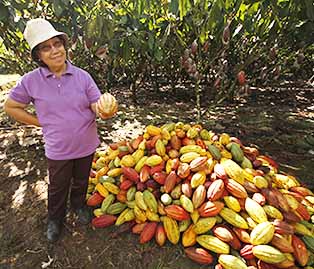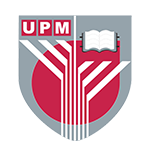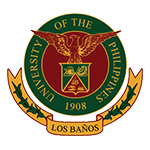 Farmer at heart, Charita Puentespina and her harvested cacao pods.
Farmer at heart, Charita Puentespina and her harvested cacao pods.
The Cocoa of Excellence Program has selected cacao-bean samples sent by Charita Puentespina of Puentespina Farms in Davao as part of the best 50 samples from a total of 166 samples received from 40 countries for the 2017 edition.
The samples were sent through freight with cost shouldered by the Department of Trade and Industry (DTI) Davao City. The DTI Export Marketing Bureau was instrumental in expediting the release of a Food and Drug Administration Certificate of Product Registration, which resulted in the departure of the company’s very first shipment to the United States on time.
Puentespina Farms is a member of Puentespina Group of Companies, based in Malagos Garden Resort in Davao City. They produce the world-acclaimed Malagos Chocolate brand.
Cacao plants, which first made it to Philippine shores in 1670 through a Spanish friar, is currently one of the country’s key crops with a huge potential in the world market. The Philippines produces more than 10,000 metric tons of cacao per year and exports about $6 million worth to the international market. The country, however, imports more than $100 million worth of cacao from other cocoa-producing countries.
The Department of Foreign Affairs said the imbalance between cacao production and importation is because the Philippines exports raw cacao, while it imports fermented cacao beans, which give chocolate bars and other products the taste and texture needed to produce the sweet type of chocolate people buy in stores.
Seeing the potential of cacao and chocolate in the export market, the Philippine government has endorsed a target to increase cacao crops to 100,000 metric tons per year by the year 2020. Euromonitor International forecasted that the Philippine chocolate market is set to grow 13 percent to $306.3 million in just four years.
Malagos Chocolate’s venture into cacao production started in 2003 when founders Roberto and Charita Puentespina leased a cacao farm in Malagos, Baguio District, Davao City. Puentespina, known as a farmer at heart, rehabilitated their cacao trees and, soon after, harvested the cacao pods. They now operate a 60-hectare cacao farm and employ around 50 in-house farmers. In addition, they also source wet cacao beans from more than 80 small growers in the area to promote sustainability in the community. They also built a training facility on their farm to teach their farmers good cacao-growing practices. They grow Trintario clones, a cross between the Criollo and Forastero varieties, specifically and predominantly the UF 18, BR 25 and PBC 123 clones. These fine flavors are the main ingredients in their award-winning chocolates that have earned nine international and two local victories to date.
The Cocoa of Excellence Program web site is the entry point for cacao producers to participate in the International Cocoa Awards (ICA). The ICA is a global competition recognizing the work of cocoa farmers and celebrating the diversity of cocoa flavors. Every two years this unique program, spearheaded by Bioversity International and Event International, recognizes the quality, flavor and diversity of cacao according to their origin.
By bringing together leading sensory-evaluation experts, the chocolate industry and the next generation of cocoa pioneers, the Cocoa of Excellence Program recognizes and rewards cacao with exceptional and unique flavours, while bringing know-how, cacoa-evaluation tools, market opportunities and incentives for safeguarding cacao diversity to farming communities and national organizations globally.
Bioversity International’s vision is for agricultural biodiversity to nourish people and sustain the planet. It delivers scientific evidence, management practices and policy options to use and safeguard agricultural and tree biodiversity to attain sustainable global food and nutrition security.
In an e-mail letter on August 2 bearing the subject “Philippines: Cocoa of Excellence Program 2017—selection of the best 50 samples,” Ines Drouault informed Puentespina and Valente Turtur of their sample’s inclusion in the selection. He informed them the sensory evaluation of all 166 samples (as liquor and untampered chocolate) was done in May, June and July 2017 by the Cocoa of Excellence Program Technical Committee. The selection of the 50 best samples was the result of the statistical analysis of the data. The 50 bean samples are now being processed into chocolate, and the next step will be the sensory evaluation by a large panel of 40 experts in September 2017. The selection of the 12 to 15 ICA will be made by mid-October.
All 50 chocolate samples will be celebrated at the Salon du Chocolat in Paris from October 28 to November 1 where the Cocoa of Excellence Program will take a stand. The ICA ceremony will take place on Monday evening, on October 30. Drouault is a consultant/research assistant, Cacao Genetic Resources, Coordination of the Cocoa of Excellence Program.
Prior to this latest recognition, Malagos Chocolate garnered two awards from the equally prestigious 2017 Great Taste fine food competition held in London, United Kingdom. Organized by the Guild of Fine Food, Great Taste is the acknowledged benchmark for fine food and drinks considered as the “Oscars” of the food world. Great Taste wins received this year by this local chocolate maker were for its Malagos 100-percent Unsweetened Chocolate accorded a 1-Star accolade under Food Category 419 (any other hot drink including hot chocolate). It was the second Great Taste Award received by their Malagos 100-percent variant. The other win was for its Malagos 65-percent Dark Chocolate under Food Category 902 (chocolate bars, dark, milk and white), which was given a 1-Star accolade, a first-time win in this competition for the variant.
In June 2017 Malagos Chocolates also received awards from the UK’s Academy of Chocolate Awards, namely a Silver for their Malagos 100-percent Pure Unsweetened Chocolate; two Bronzes for Malagos 65 percent and 72-percent Dark Chocolates; and one Commendation for Malagos 85-percent Dark Chocolate. The company has harvested impressive awards since it joined various chocolate competitions.
In 2016 Malagos Unsweetened Chocolate (drinking-chocolate category) won Silver and 2 Stars out of 3 Stars, respectively, at the Academy of Chocolate and Great Taste Awards in London, UK. In October 2015 Malagos 65-percent Dark Chocolate was given a Silver at the World Drinking Chocolate competition organized by the International Chocolate Awards in Hannover, Germany.
In April of that same year Malagos Unsweetened Chocolate also won the Bronze Award for Best Unflavored Drinking Chocolate at the 2015 Academy of Chocolate Awards in London, UK. All these awards bestowed on its products are all marks of excellence in their taste, form and quality. Malagos Chocolate proudly promotes its chocolate bars and drinks as from “Tree to Bar”; “Single-Origin” from Davao, Republic of the Philippines; “Award-Winning” “World-Class”; and “Proudly Filipino” (made and sourced product).
All of these support the observation that Filipino-made pure chocolate is on the rise. Artisan chocolate makers, by selling their life’s work, seek to educate Filipino consumers about the true taste, health benefits and value of pure chocolate. The artisan single-origin chocolate making reflects the passion and mastery of the craft by its makers. Every chocolate bar is unique, especially if that is handcrafted single-origin chocolate made from the finest Philippine cacao.
Like wine sources, this tropical fruit bears the distinct flavor of the land where it originates, its terroir. The trees of Criollo, Forastero and their hybrid Trinitario varieties, grow mostly in the southern parts of the country. The pods are harvested; the beans are roasted, cracked and ground into chocolate liquor, which is then refined with sugar and more cocoa butter. Conching—the final step necessary for the chocolate to lose some of the cacao’s bitter and harsh qualities—takes several hours to develop its flavor—and result in the final smooth and creamy mass molded into bulk bars. This is artisan single-origin chocolate making where every bar reflects the passion and mastery of craft of its maker. Filipino chocolates have a distinct Asian flavor.
But can they compete with Belgian and Swiss market favorites?
Let us share with you the story of Ralfe Artisan Chocolates (Ralfe Gourmet), which started its humble beginnings in Raquel’s kitchen in Cebu and has now come a long way. Like Malagos Chocolate, it is making a buzz not just for its pure, delectable chocolate products but also for its distinctly Filipino cacao—in the international market. Raquel Choa practically grew up with chocolate. Her grandmother taught her how to plant and roast cacao, followed by the process of making tablea—local chocolate made from Filipino cacao beans. It is also known in the Visayas as sikwate, a chocolate drink.
As age 7, Raquel was already making them on her own. Some would readily think that making a tablea drink only meant placing tablea chocolate in a clay pot, adding water and whisking it with a batirol to create froth. Raquel believes there is more to chocolate than that.
When asked what makes her creations stand out, Raquel said it is because their chocolate is given that extra ingredient.
“We put heart into the chocolate. There’s passion put into it, “she said. “We give love in our work.”
Realizing that she just couldn’t keep on making tablea since they will only be ingredients to what chefs in hotels and restaurants are making, she decided to evolve. Her decision was to make artisan chocolate. Initially, people in Cebu started to notice her carefully crafted bonne bouchet that they eventually attracted more attention—from the right people.
Raquel was given a chance to showcase her chocolates to diplomats in Manila at an event organized by Ambassador Jose Maria Cariño. He believed Raquel’s products have a place in the world’s evolving chocolate market—as a good alternative to Belgian and Swiss favorites due to its distinct Asian flavor.
The woman from Cebu who started making her delicacies in her own small kitchen was immediately asked for about 1.5 tons of her chocolate to be exported to China, and more orders are coming in.
Prior to the event, Raquel was already exporting tablea to gourmet stores in Vancouver, Canada. Talks are also ongoing to bring artisan chocolates to Singapore and Germany. Foreign Affairs Undersecretary Rafael Seguis, who was at the event, made a speech about how Raquel’s business is among the economic factors that can help restore economic activity in the Visayas—a region frequently ravaged by earthquakes and typhoons.
Raquel’s cacao farmers come from both Cebu and Bohol. Some of them are affected by natural disasters. Business, however, continues to operate to generate livelihood and raise the quality of life in their community.
Puentespina’s and Raquel’s initiatives to elevate the industry by not being content with just producing raw cacao and tablea as ingredients, can certainly open doors for the Philippines. If the country is also processing raw cacao for chocolate, chances are, the import-export ratio of cacao may become even.
Malagos Chocolate and Ralfe Artisan Chocolate have both been well received by the international community. It will only be matter of time for these Filipino-made and sourced chocolates to be a big hit as well in the highly competitive and diversified world market.
Isn’t it ironic that while Filipinos have shown preference for imported chocolates, mostly from the United States, Europe, Australia and Japan, we have here in our own country, two of the world’s best, acclaimed by international chocolate connoisseurs, no less! Isn’t it about time we appreciate more what our local farmers produce? They are not only as delicious – if not more delicious than their more popular counterparts; they surely will not make such a big dent in your pockets as well.









